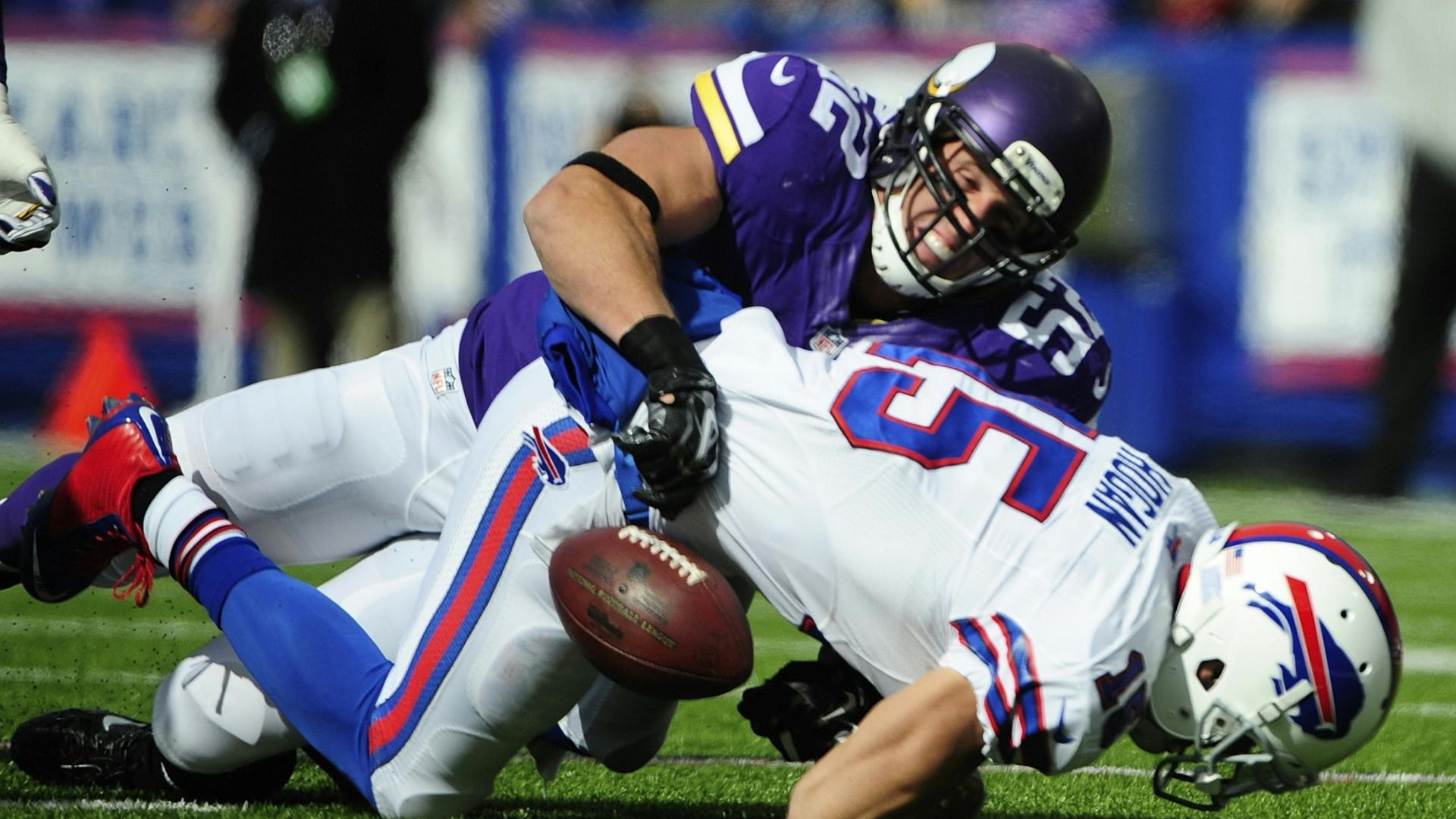The Vikings had them right where they wanted them.
A stop would get their defense off the field, and after the Vikings got them backpedaling on earlier downs, their opponents had a long ways to go to convert for a first down.
Wait, which game are we talking about here?
The one in New Orleans? The victory over Atlanta? Or Sunday's last-second loss in Buffalo?
Well, it could have referred to any of those games. And the loss to New England, too. But in this instance, the one in question is the most recent one — the 17-16 loss to the Bills, the one that still had the Vikings shaking their heads 24 hours later.
Buffalo's two long-distance conversions, including their game-saving completion on Fourth-and-Forever, on the game's final drive are the most glaring instances of the Vikings not finding a way to finish a defensive stand and get off the field in a pivotal spot. And in the aftermath of the spectacular come-from-ahead loss, those struggles have put the spotlight on a trend that has carried on throughout the 2014 season.
Thirty-three times the Vikings have put their opponents in the unfavorable position of needing to pick up 10 or more yards on third or fourth down to move the chains. And on exactly one third of those plays, their opponents converted and kept a drive alive, many of those drives ended with scores.
"That's kind of been the Achilles' heel," Zimmer said.
Buffalo's 24-yard pass play on fourth-and-20 on Sunday was the longest and the most painful of the bunch.
After defensive tackle Tom Johnson sacked Bills quarterback Kyle Orton on third down with one minute, 47 seconds left, the Bills surprised the Vikings by hurrying back to the line of scrimmage. When the ball was snapped, cornerback Captain Munnerlyn still was sprinting back to the line after a covering a deep route on the previous play and outside linebacker Chad Greenway had his head turned as he barked out the play call to teammates.
Greenway conceded Monday that the fraction of a second was just enough to enable Bills tight end Scott Chandler, his college teammate at Iowa, to slip behind him for a first-down catch.
"I've watched the tape a couple times now, and you wish you could change something," Greenway said. "But it's hard to stop the clock when a team's driving on you in two-minute."
Zimmer, on the long flight home from Buffalo on Sunday night, decided in hindsight that he should have called a timeout when he saw the chaos from the sideline, even though stopping the clock for his opponents — who should have been the flustered ones — in a two-minute drill was counterintuitive to the lessons he had learned from his coaching mentors.
"The clock is running so that's in our favor," Zimmer said. "The chances of them hitting a fourth-and-20, the clock is running, the game is on the line — you've got a lot of things in your favor at that point in time."
Three plays later, poor technique from cornerback Josh Robinson enabled Bills wide receiver Sammy Watkins, who eventually would score the winning touchdown on the final play from scrimmage, to get inside on a slant route and make a catch to convert on third-and-12.
The Vikings rank 12th in the NFL in third-down defense this season, having allowed their opponents to convert 40.2 percent of the time. But there is something about those long ones that has given Zimmer and his defense fits.
In the Week 2 loss to the Patriots, before the game turned into a laugher, the Vikings allowed Tom Brady to complete a long pass on third-and-14. During the final drive of the loss to the Saints a week later, Drew Brees completed passes for conversions on third-and-10 and third-and-11 as the Saints ran out the clock. And in the Vikings' Week 4 victory, the Falcons had a pair of touchdown drives during which they moved the chains on third-and-long.
Since then, Zimmer said the Vikings have devoted more time in practice to defending "the third-and-real-longs" in the hopes of improving his defense's chances in a situation like Sunday.
"The conversion rate in the NFL is very small in that," Zimmer said. "Fourth-and-20, you'd think the odds are pretty good in our favor."
Statistically speaking, the Vikings had an 88 percent chance of getting a stop on that play, according to advancedfootballanalytics.com. But they didn't, and that's what separated a good defensive performance Sunday from a great one.
"We've just got to get off the field," safety Harrison Smith said. "We had them in position where we could have, and that is what the good teams do. The good teams win the game right there."

